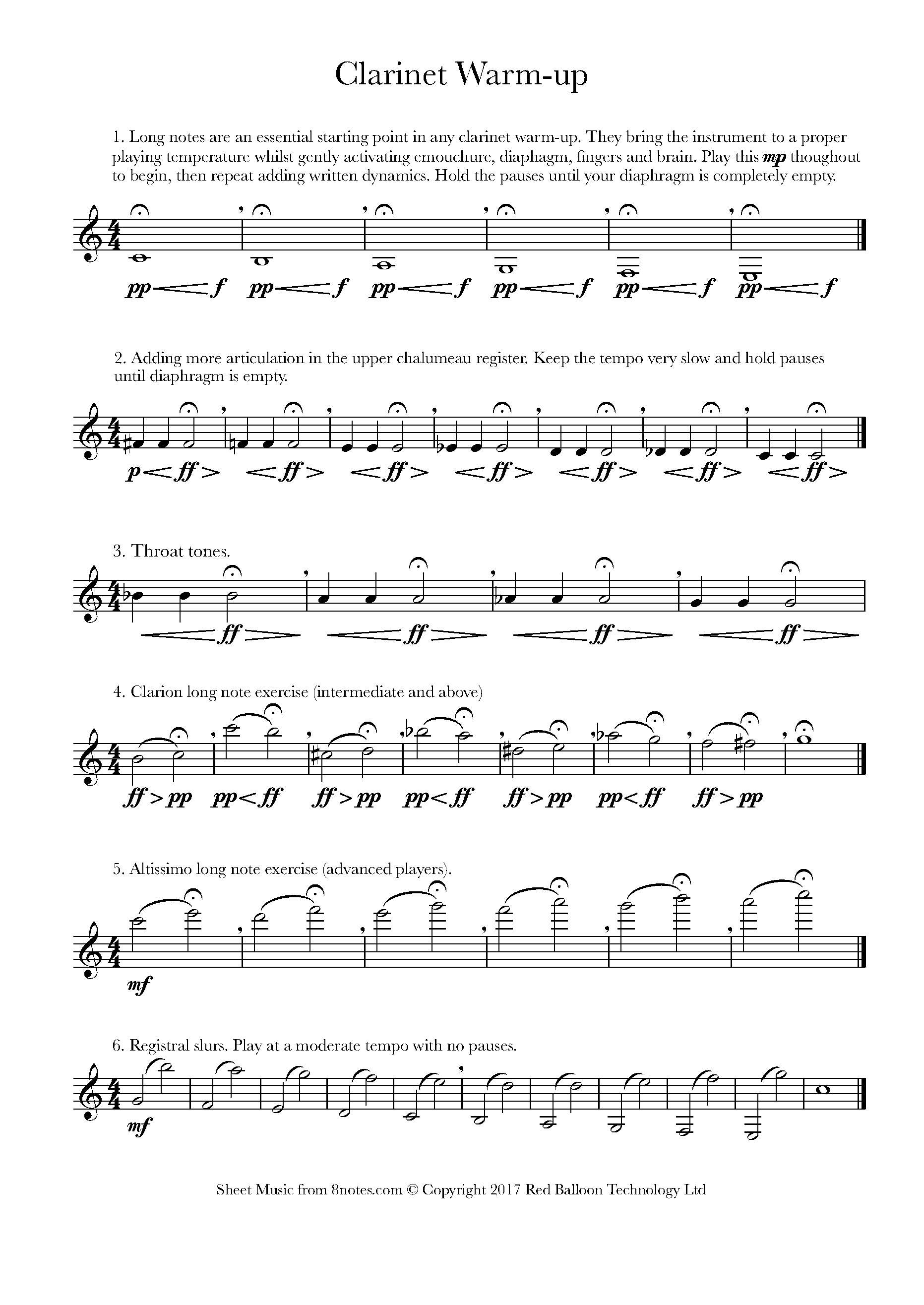Crossing the Break Smoothly on the Clarinet
by Christian Morris
Clarinet Registers
The clarinet is divided into three distinct registers. The chalumeau, which runs from written low E to Bb (and includes throat tones):The clarion, which goes from B in the middle of the stave to high C:
And the altissimo register starts on C#, going, in the case of professional players, to A and beyond.
One of the issues that learners face when playing the clarinet is how to move smoothly from the chalumeau register to the clarion register. This is especially the case when, for example, moving from a note near the top of the chalumeau register to the first notes of the clarion register, as for example, playing throat tone A to low clarion B:
Why can this cause problems?
a) resistance
If you play A (on the stave) on the clarinet, you are using just one key. This means that the air has many points within the instrument to escape, because most of the holes are not covered. When you move to the note B, suddenly all of the holes are covered so that the air has to travel the whole length of the instrument, exiting at the bell (at the bottom). This means that there is a sudden increase in resistance i.e. you need to blow harder.
b) fingering
There are lots of fingers to move, especially when changing from note A or A# to B. Any hesitation or inaccuracy when placing the fingers will affect the smoothness of the transition. Understanding these problems is the key to cultivating smooth shifts between the chalumeau and clarion registers.
So how do I do it!?
The most important thing is not to overcomplicate the issue. You will hear many long-winded explanations on how to achieve a smooth transition. They may even fill you with fear and anxiety. You can rid yourself of this straight away, since, bearing in mind the issues already described, transferring to the upper register requires just two things:a)
a good supply of air, so that you are prepared for the change in resistance,
b)
that the fingers move together, smoothly and accurately.
With both of these things in place, the note B will just be a note like any other.
That's great, but how about a bit more detail?
Let's take the air first. When we say 'a good supply of air' we don't mean suddenly blowing as if your life depended upon it; it means being aware of the change in feeling when playing a B as opposed to playing an A or Bb.As a first step, we can cultivate good breathing by practising long notes. We can do this by incorporating them into our daily warm-up; try exercises 1-3 in the 8notes warm-up for clarinet, concentrating on a good consistent airflow:

Clarinet Warm-up Exercises
Next, practise playing notes above and below the break, but with gaps between them so that you have plenty of time to get the fingers in the correct position when moving. Concentrate instead on the difference in feeling between blowing the note A, which has very little resistance, and B, which has a lot more. Always aim for a full and beautiful tone.
One good approach from here is gradually to reduce the space between the notes A and B in this exercise:
 Tips
Tips
If there are still some issues, the problem will very likely lie with your fingers, which must move quickly and accurately. Here are some tips to achieve this:a)
Make sure your hands have the correct shape; fingers work most efficiently when they are arched and not flat.b)
Make sure that your fingers do not move too much when changing notes. Ideally the fingers should be in contact with the holes at all times; lifting your fingers off the holes increases the chance that they will not find the correct position when returning to the body of the instrument.c)
Do not use too much pressure with your fingers since this increases stiffness. Movements should be smooth.d)
When moving from A to B take particular care with your left index finger on the A key and the left thumb on the register key. The movement of index finger from hole to key when moving from A to B is achieved with a rocking motion i.e. no lifting off. Similarly the thumb should be ready over the hole so that it can both cover the hole and activate the register key for the note B.e)
Check your fingers are not moving too much by practising in front of a mirror.





